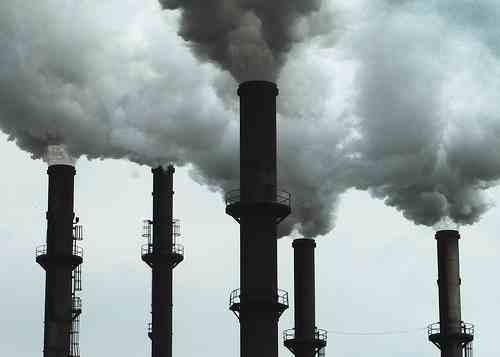

Economy
Governments’ climate pledges, if implemented, would warm world by 2.7˚C
The combination of Government climate action plans, if implemented, would bring global warming down to 2.7˚C, according to an analysis released today by the Climate Action Tracker (CAT).
On the day of the October 1 UN deadline for governments to submit their emission reduction targets, or Intended Nationally Determined Contributions (INDCs) for 2025 and 2030, the CAT’s estimate of their impact on warming shows that, if fully implemented, they would bring warming down to 2.7˚C – an improvement of 0.4˚C since the last assessment of pledges at the Lima talks in December.
This is the first time since 2009, when the CAT began calculating temperature estimates from climate action pledges, that projected warming has dipped below 3˚C.
“Our December update included pledges and informal announcements by China, the US and the EU, and we estimated an average global warming level of 3.1˚C. The biggest contributing factors to the change in our temperature estimate since Lima have been China and India,” said Dr Louise Jeffery of the Potsdam Institute for Climate Impact Research.
China’s INDC and related policies would result in a peaking of China’s carbon dioxide emissions in the late 2020s, and which will have substantial consequences for post-2030 emissions, resulting in lower overall global warming.
The assessment includes an estimate of India’s INDC, due out tomorrow, where significant elements – such as its renewable energy target – are in the public domain, along with recent steps India has taken that reduce its emissions pathway.
However, the CAT’s current policy projection (which estimates warming from the policies Governments have in place now) would still see a warming of 3.6°C (3.3 to 3.8°C) by 2100. The INDCs would reduce warming by about 0.6 to 1.1°C from that pathway.
The emissions gap is still set to grow rapidly towards 2030, and there is a major risk that if the INDCs are locked in to 2030, without review, the achievement of the 1.5°C goal called for by the most vulnerable countries may be locked out, and achievement of the 2°C goal fundamentally threatened.
“The INDC process has clearly led to progress, but it is clear that in Paris governments must consider formally acknowledging that their first round of climate plans for 2025 and 2030 will not hold warming below 2˚C,” said Bill Hare of Climate Analytics.
“They need to rapidly review these plans by no later than 2020, and revise commitments for the post 2025 period. Based on the INDCs submitted to date, locking in targets for 2030 could be catastrophic for efforts to limit warming below 2oC, so the agreement had better focus on 2025.”
The CAT has now analysed 19 INDCs with a combined total of around 71% of global emissions, but have found many of them to be inadequate. With India, the total will be 77% of global emissions.
“All big emitters should seriously reconsider improving their INDCs between now and Paris, or soon after. That only two Governments have climate commitments rated sufficient is not ideal, only two months before Paris,” said Professor Kornelis Blok of Ecofys.
“The need to fill the gap between the projected INDC emissions levels in 2025 and the levels necessary to hold warming to below 2°C means significantly more rapid, and costly, action compared to a situation where more ambitious targets for 2025 were adopted and where governments took immediate action now to achieve them,” said Niklas Höhne of NewClimate Institute.


 Environment10 months ago
Environment10 months agoAre Polymer Banknotes: an Eco-Friendly Trend or a Groundswell?

 Environment11 months ago
Environment11 months agoEco-Friendly Home Improvements: Top 7 Upgrades for 2025

 Features8 months ago
Features8 months agoEco-Friendly Cryptocurrencies: Sustainable Investment Choices

 Features10 months ago
Features10 months agoEco-Friendly Crypto Traders Must Find the Right Exchange





























